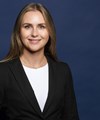We live in challenging times and have been for a while. During the month of April, the US Treasuries market fell just over 2% and the S&P 500 just over 5%. This is the first time both assets have performed that poorly in the same month since 2008. We have low unemployment and strong growth; the sun is shining, but it is raining after all. How can we explain this?
Now that inflation has picked up in most regions, we are seeing an increase in policy rates in many countries. Sweden raised the interest rate 0.25 percentage points significantly earlier than their forecast showed just three months ago. Inflation in the US from March data shows an inflation of just over 6%. These global interest rate hikes will affect growth, but it is probably also positive that we move away from the zero-interest rate environment and negative interest rates we have been dealing with for the last few years. The Bloomberg Global Aggregate Corporate Index fell just over 4% in April, as did the Bloomberg Global High Yield Index.
The fund ended the month negatively, around -1.5%, depending on the share class. This is in comparison with the broader global high yield indices and global high yield ETFs which fell between -4% and just under -5% in April.
Not all quarterly reports have been released yet, but if we look broadly from the US and Europe perspective, we see that margins are still attractive in many sectors and earnings growth is now back more at median levels after earnings were growing well above historic standards for a period. What does this mean for credits?
Consensus is that the global economy will be weaker going forward, but corporate balance sheets are generally in good shape. We who are credit investors see that companies now must pay more in terms of credit spreads, combined with the fact that central banks are raising interest rates. Summing up, this entails much more attractive yields than before for credit investors. We believe that aggressive growth acquisitions financed by large debt issuances will be more difficult in the future. We see evidence of this already, as the high yield new issue market in the US so far this year is down approximately 70% from last year's corresponding period levels.
The new issue market was hesitant also in April. There were very few new issues in high yield in both Europe and the USA.
The fund did not participate in any new share issue during the month of April. We did not see any attractive opportunities in the few that came in April; instead, we have been cautious also this month in a challenging environment. In the secondary market, we added Energizer, Liberty Mutual and Loxam.
ESG remains a strong focus for the fund and we see that even in the US, banks are beginning to require companies to present answers to questions and plans for ESG in loan documentation. CPI data that measure certain key figures for companies' sustainability work are becoming increasingly common also in the corporate bond market globally.
The fund is classified as an Article 9 fund under the SFDR Disclosure Regulation.
The synthetic CDS credit index widened during April. The iTraxx Crossover index went from +338bp at the end of March to +429bp at the end of April.
Portfolio management team:
Read our latest monthly reports
Pareto ESG Global Corporate Bond
Pareto Nordic Corporate Bond
Pareto Nordic Cross Credit
Pareto Global
Pareto Aksje Norge
Pareto Nordic Equity
Historical returns are no guarantee for future returns. Future returns will depend, inter alia, on, market developments, the portfolio manager’s skill, the fund’s risk profile, as well as fees for subscription, management and redemption. Returns may become negative as a result of negative price developments. This is marketing communication.



